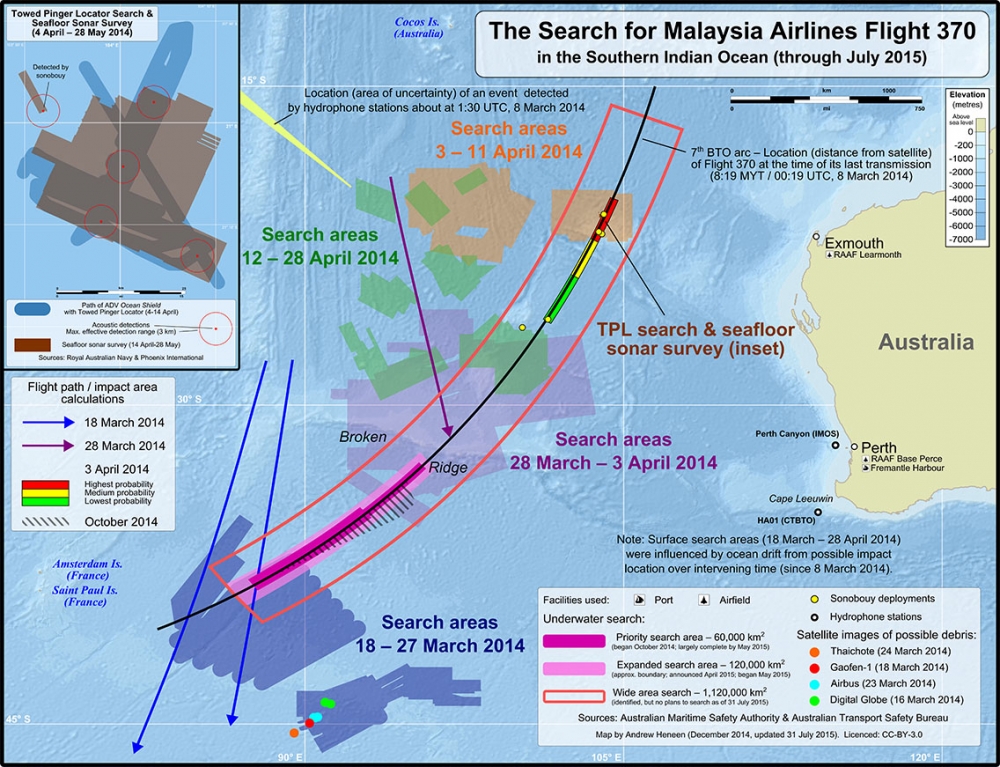The talks between Australian Transport Minister Darren Chester, his Malaysian counterpart, Liow Tiong Lai, and China’s Yang Chuantang, come as bad weather has delayed finalising the search with suggestions by Mr Liow it may now extend beyond October. The Friday tripartite ministerial meeting will be preceded by a gathering of senior aviation officials.
MH370 disappeared in mysterious circumstances on March 8, 2014, while travelling from Kuala Lumpur to Beijing with 239 people on board. They included six Australians and 153 Chinese nationals.
Mr Liow said recently that the three countries were committed to completing the 120,000 sq km search.
'We will make an announcement on the way forward,' he was quoted by Malaysian state news agency Bernama as saying.
The three countries agreed they would wind up the search once the 120,000 sq km zone had been searched if no new credible information came to light, despite pressure from victim’s families for it to continue.
On the flipside: Why the search must go on.
The Australian Transport Safety Bureau said in a regular update this this week that 110,000 sq kms had now been searched. It said bad weather had severely affected operations and delayed the search by six to eight weeks but warned further delays could see it continue “well beyond the winter months”. Three ships — the Fugro Discovery, the Fugro Equatoris and the Dong Hai Jiu 101 — are still engaged in the hunt.
“Since the onset of poor conditions associated with winter weather, progress has slowed with only a minimal area searched during this time,’’ the ATSB said. “Marginal weather conditions still allow the use of deep tow equipment provided conditions are such that the equipment can be safely deployed and recovered.
“However, the autonomous underwater vehicle (AUV) which is used to survey some of the most difficult portions of the search area such as the underwater canyon areas that cannot be searched effectively using the deep tow sonar, can only be launched in the calmer conditions of spring and summer.’’
The Australian-led search, which has attracted some criticism and claims it is in the wrong area, has been difficult because the aircraft stopped transmitting information about its position and other parameters shortly into its flight. Searchers were forced to combine a series of assumptions with a sophisticated analysis of handshakes between the aircraft and a satellite to determine possible crash sites and a search area with the highest probability it contained the wreckage.
Since then, several pieces of debris that were almost certainly from the plane have been recovered, including a wing piece known as a flaperon and a fragment from the aircraft’s interior. The size and condition of the fragments suggest the airliner disintegrated from the force of the impact.
























